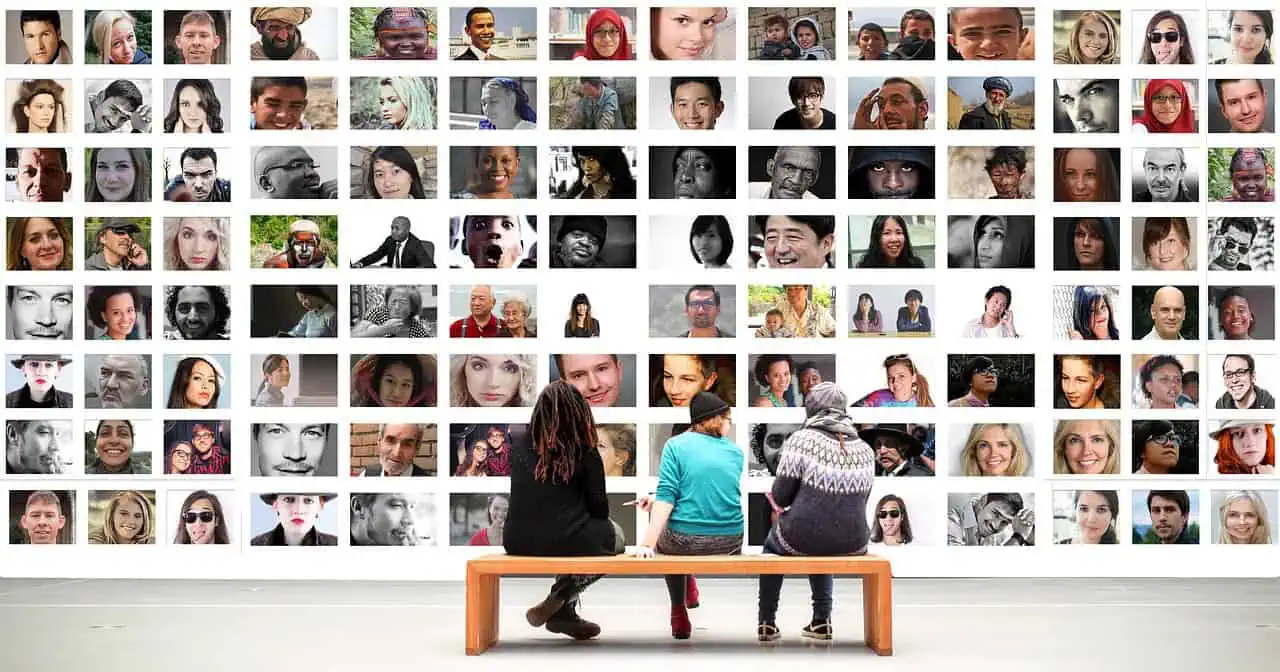Welcome to a journey into the future of America—a nation set to be more diverse than ever by 2060. This guide is your beacon for high school graduates, entry-level job seekers, and all who dream of a career in a vibrant, inclusive landscape. As the demographic shifts shape the country, understanding these changes becomes crucial for navigating your career path. We will look into what it means to live and work in an America rich with diversity. From demographic transformations to economic trends, cultural infusions to political shifts, we cover the spectrum of changes awaiting us. Our aim? This is to prepare you for a future where diversity is the norm, not the exception.
For those seeking opportunities with employers who value and promote inclusivity, you’re in the right place. The insights offered here are not just about predicting the future; they’re about shaping it. By nurturing the shift towards a diverse nation now, you position yourself at the forefront of tomorrow’s workforce. So, whether you’re contemplating your next educational step, entering the job market, or seeking a career change, let this guide illuminate your path. The future is diverse, and with the right mindset, skills, and knowledge, you’ll thrive in it and lead. Welcome aboard as we explore a diverse America. It’s more than a forecast; it’s a blueprint for success in an interconnected, inclusive world. Let’s dive in!
The Changing Face of America
By 2060, America is expected to be a diverse nation. With a significant demographic shift, groups traditionally seen as minorities will become the majority. This change stems from higher birth rates in these communities and increased immigration. So, what does this mean for America? It signals a profound shift in our collective identity. The idea of a majority-minority country underscores the rich diversity that’s always been part of our history. Yet, it also puts us on a new path.
Here’s what we’re looking at:
- Increased Diversity: Every sector, from education to the workfoce, will witness unparalleled diversity.
- More Languages and Cultures: The American cultural landscape will bloom with more languages, traditions, and celebrations.
- Broader Perspectives: Diverse viewpoints will enrich conversations, innovation, and decision-making across fields.
This shift towards a more diverse America presents both opportunities and challenges. For one, it underscores the need for inclusive policies and practices, ensuring everyone’s voice is heard and valued. Moreover, it hints at a more competitive world, where understanding and leveraging diversity can be a trump card.
Such a transformation emphasizes the vital role of education in preparing for a diverse future. Hence, exploring career diversity becomes crucial. By familiarizing ourselves with diverse educational pathways, we can better anticipate and navigate the changes ahead. In essence, the narrative of American diversity is not just about numbers. It’s about understanding, embracing, and preparing for a future where diversity is at the heart of our national identity. Reflecting on fostering an environment that celebrates diversity today is crucial as we edge closer to this future.
To get a clearer picture of this demographic evolution, several U.S. Census Bureau reports project the specifics of this transformation. They offer insights into how, by 2060, the face of America will reflect a broader palette of human experience.
America’s Diverse Nation in 2060
Examining the factors propelling these changes is crucial as we delve deeper into what makes America a diverse nation. A blend of increased immigration and higher birth rates among minority groups plays a significant role. But there’s more to the story. Education and awareness are pushing the boundaries of what diversity means to us. Schools and universities are incorporating more inclusive curriculums. This helps foster a generation that values diversity as a strength. Similarly, workplaces are increasingly focusing on diversity and inclusion initiatives.
Here are vital contributors to the demographic transformation:
- Immigration Patterns: A steady influx of people around the globe enriches the American demographic numbers.
- Birth Rates: Minority communities are experiencing higher birth rates, altering the population balance.
- Cultural Integration: As diverse cultures merge, they form a new, inclusive American culture.
This expected shift towards a more diverse nation isn’t just happening in isolation. It’s influenced by global trends and a collective change towards acknowledging and celebrating diversity worldwide. The internet and social media play pivotal roles, bringing diverse voices and stories into the spotlight. As areas like technology and science sectors continue to evolve, they draw talent from all over the world, contributing to the diversity of the American workforce. This influx of diverse talents is crucial for innovation and economic growth, highlighting the tangible benefits of becoming a diverse America.
Society’s growing acceptance and celebration of diverse identities also reflect an evolving mindset. Events celebrating cultural diversity, along with an increase in minority representation in media and politics, signal a shift towards a more inclusive America. Thus, the journey towards a diverse nation is paved with changes in how we live, work, and interact. It’s a testament to the evolving American spirit, which sees strength in its diverse roots and future possibilities.
Demographic Shifts Ahead
The shifts toward a diverse America in the future are not just numbers. They tell a story of change, growth, and adaptation. As we edge closer to 2060, understanding these shifts is vital. It gives us a glimpse into future decades of American life.
So, what do these shifts look like? Here’s a breakdown:
- Hispanic and Asian Populations Surge: These groups are set to see the most growth.
- African American Growth: This community will continue to grow steadily.
- Declining White Majority: They’re projected to become less than 50% of the population.
Each of these changes brings a wealth of perspectives and experiences. Hence, the diverse American narrative is rich with stories from around the globe. And as these groups grow, so does their influence on culture, economy, and food. Yes, America’s food scene will mirror this diversity. Expect more flavors, dishes, and fusion cuisine. Diversity is truly delicious!
But there’s more. Education will feel the impact, too. Schools will teach more languages. They’ll celebrate more holidays. And they’ll tell a broader range of stories. All this is because of the minority growth in America. Also, businesses will cater to a more varied customer base. They’ll need to understand different cultures. And they’ll offer products and services that reflect this new America. So, for entrepreneurs, diversity becomes critical to success.
The demographic shifts toward a diverse nation in 2060 hold exciting possibilities. They remind us that diversity is our strength. And they invite us to grow together into a more inclusive future. These demographic shifts are shaping a new path. They’re not just changing who we are. They’re also changing how we see ourselves and how we connect.
Economic Changes on the Horizon
The transition towards a diverse America isn’t just about cultural and demographic shifts. It also signals significant economic changes. Diversity will fuel innovation like never before. As diverse perspectives merge, new ideas and solutions will surface. This is great news for America’s competitiveness on the global stage.
Here’s what we can expect:
- Diverse Workforce: Companies will harness a broader range of talents. This means more creativity and innovation.
- New Consumer Markets: Businesses will tap into new markets. They’ll adapt their products and services to meet diverse needs.
- Entrepreneurship Boom: More diverse backgrounds will lead to unique business ideas. The startup scene will be vibrant.
However, these changes also come with challenges. Wage gaps and equitable access to education are issues that need addressing. It’s crucial to ensure that the implications of a diverse America benefit everyone. Here, policies play a vital role. They need to promote fair opportunities and growth for all communities. Companies must also embrace inclusive practices as the workforce becomes more diverse. This includes everything from hiring to leadership development. It’s not just the right thing to do—it’s also innovative business. Research shows diverse teams perform better. So, companies that adapt early have an edge.
Small Business Administration (SBA) resources can be invaluable to support these economic shifts. They offer support for minority entrepreneurs. Also, Embracing Career Change as a Diverse Candidate can help you guide careers in this evolving landscape. The economic implications of becoming a more diverse nation by 2060 hold promise for growth and innovation. By tackling its challenges head-on, America can ensure its future economy is as varied and dynamic as its people.
The Cultural Impact of Diversity
In 2060, the cultural landscape of The United States will be more vibrant than ever. As we become a more diverse America, our everyday lives will reflect this transformation. From art and music to festivals, the influence of different cultures will be everywhere. This diversity will enrich our understanding and appreciation of the world. Here’s why:
- More Cultural Festivals: Celebrations from different cultures will become common. They’ll offer chances to learn and bond.
- Diverse Media Representation: Films, books, and TV will showcase more varied stories and characters.
- Multilingual Society: More languages spoken means more opportunities to communicate and understand each other.
As a result, America will not only accept but also celebrate differences. Schools will teach a broader history, including stories from all cultures. This is essential for fostering understanding and respect from a young age. Also, diversity in the arts will flourish. Museums and galleries will display works from artists of all backgrounds. This enriches the cultural scene and provides critical perspectives on our shared human experience. However, to truly embrace this shift, it’s essential to confront and overcome prejudices. Educating ourselves and others is critical. Websites like Smithsonian Magazine showcase how history and culture can inform our present.
The diverse America in 2060 will be a place where cultures blend yet retain their unique identities. It’s a future that promises all Americans a more prosperous, interconnected life. Walking into this future, we must admire diversity and actively participate in cultivating it. Engaging with different cultures through travel, education, and arts is a good start. It’s about building a society where everyone feels seen, heard, and valued.
The Political Landscape in 2060
The political landscape will change dramatically as America evolves into a diverse nation by 2060. These changes will reflect our diversified population. As such, voting patterns will shift, and there will be more minorities in political offices. This is crucial for a truly representative democracy.
Here’s what’s likely:
- Shifted Voting Patterns: As demographics change, so will voting preferences. This could reshape the political map.
- Increased Minority Representation: More diverse voices in office mean policies considering all Americans’ needs.
- New Policy Priorities: Issues important to a diverse electorate, like immigration and education, will take center stage.
Moreover, political discourse will evolve. Discussions will increasingly focus on inclusivity and equality. It’s not just about electing a diverse group of leaders. It’s also about ensuring all voices are heard and valued in decision-making. In this context, grassroots movements will play a more significant role. They’ll mobilize voters and advocate for issues that matter to their communities. This participatory democracy is critical to addressing the needs of a diverse nation.
International relations may change as well. America’s foreign policy could reflect its internal diversity, leading to nuanced diplomacy. As such, the global standing of the U.S. may improve, fostering better international ties. Yet, challenges remain. Bridging the divide between different groups is essential. Dialogue, understanding, and collaboration are critical. Only then can we fully harness the potential of America, which reflects its diverse population. The political transformations we’ll see by 2060 will shape domestic policy and America’s place in the world. This makes active engagement in political processes more critical than ever.
Addressing Inequality
Shifting towards a diverse America in 2060 brings to light the persistent issue of inequality. Despite the progress, gaps in income, education, and opportunity remain. Addressing these challenges is crucial for a nation that values fairness and equity.
Let’s focus on:
- Closing Wage Gaps: Ensuring equal pay for equal work across all demographics is fundamental.
- Access to Education: High-quality education should be accessible to all, regardless of background.
- Healthcare Equality: Everyone deserves access to affordable and quality healthcare services.
The justice system needs reform. Minimizing disparities in sentencing and incarceration rates is critical. Also, investing in communities can bring about long-term positive changes. Infrastructure, housing, and job training are areas to focus on. Fostering economic mobility is another crucial aspect. By supporting small businesses and entrepreneurship within minority communities, we can stimulate growth. This, in turn, will contribute to a more equitable and diverse nation.
At the heart of these efforts must be a commitment to inclusivity and respect. Policies and initiatives that celebrate diversity and aim to bridge divides will strengthen the social fabric of our nation. So, addressing inequality is not just a moral imperative—it’s a foundational step towards realizing the full potential of an America that truly embraces its diversity. By tackling these issues head-on, we pave the way for a more just and equal society by 2060.
Building Unity in Diversity
As America steps into 2060, unity in our diversity will be fundamental. Our journey towards becoming a diverse nation enriches us all. Yet, it also calls for understanding and respect across differences.
For unity, consider these points:
- Dialogue and Education: Open conversations and educational programs promote mutual understanding.
- Inclusive Communities: Spaces where everyone feels welcome are essential. They allow diverse voices to be heard and valued.
- Respect for All Cultures: Celebrating each other’s traditions fosters a sense of belonging and respect.
Also, media plays a part. Responsible representation of all groups in media is vital. It helps break down stereotypes and builds empathy. Sports, music, and the arts can also unite us. They bring people together, no matter their background. Workplaces must continue being inclusive. Diversity training and policies that embrace all are steps forward and show we’re serious about building a diverse nation by 2060.
Government and community initiatives can support these efforts, too. Programs that encourage diversity and inclusion in neighborhoods are a start. So are policies that ensure equal opportunities for everyone. Right now, we have a chance to push forward; we can make the idea of America being a fully diverse nation by 2060 a reality. We can build a united, diverse country by respecting and learning from our differences. It’s about creating a future where everyone feels they belong.
FAQ’s
What Will America Look Like in 2060?
America will be a diverse nation, with minorities making up the majority. This will impact culture, politics, and the economy.
How Will Demographic Shifts Affect the Workforce?
The workforce will see more diversity, bringing innovation and new perspectives. Companies will adapt to serve a diverse consumer base.
What Are the Economic Implications of These Shifts?
Diverse perspectives will fuel economic growth and innovation. Businesses will tap into new markets, but addressing wage gaps is crucial.
How Can We Prepare for a Diverse America in 2060?
Embracing diversity in education, workplaces, and communities is vital. Policies that promote equity and inclusion are essential.
What Role Does Government Play in This Transformation?
The government must enact policies that ensure fair opportunities for all. Supporting minority entrepreneurship and education is vital.
How Can Individuals Promote Unity in Diversity?
Through open dialogue, education, and participating in diverse cultural activities. Respecting and celebrating differences is crucial.
Conclusion
As we envision America in 2060, it’s clear that diversity will be at the heart of our nation’s identity. The demographic shifts, economic changes, cultural impacts, and political evolution we discussed all point toward a more inclusive future of diversity jobs. Yet, this transformation calls for commitment, understanding, and active participation from all of us. Preparing for this diverse nation means embracing change now. It involves promoting equity, celebrating cultural diversity, and ensuring every voice is heard. It’s about building communities where everyone feels valued and included.
Participating in this movement contributes to a future where diversity is acknowledged and celebrated. Your actions today will help shape an America that truly reflects the rich tapestry of its people. So, let’s get started. Join us, spread the word, and be a catalyst for positive change. The journey towards a diverse America starts with us, here and now. To make this vision a reality, joining hands with organizations that champion diversity is crucial. Join Diversity Employment and upload your resume today as part of our mission to create an inclusive workforce. We can pave the way for a prosperous, united, diverse nation.




